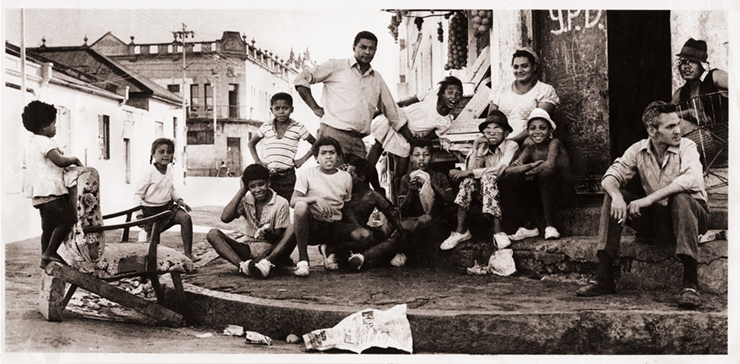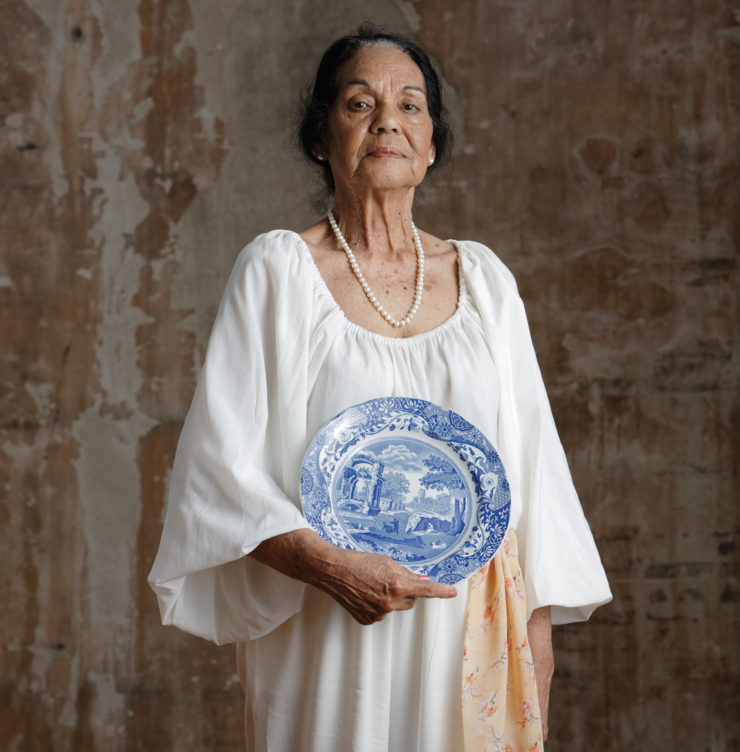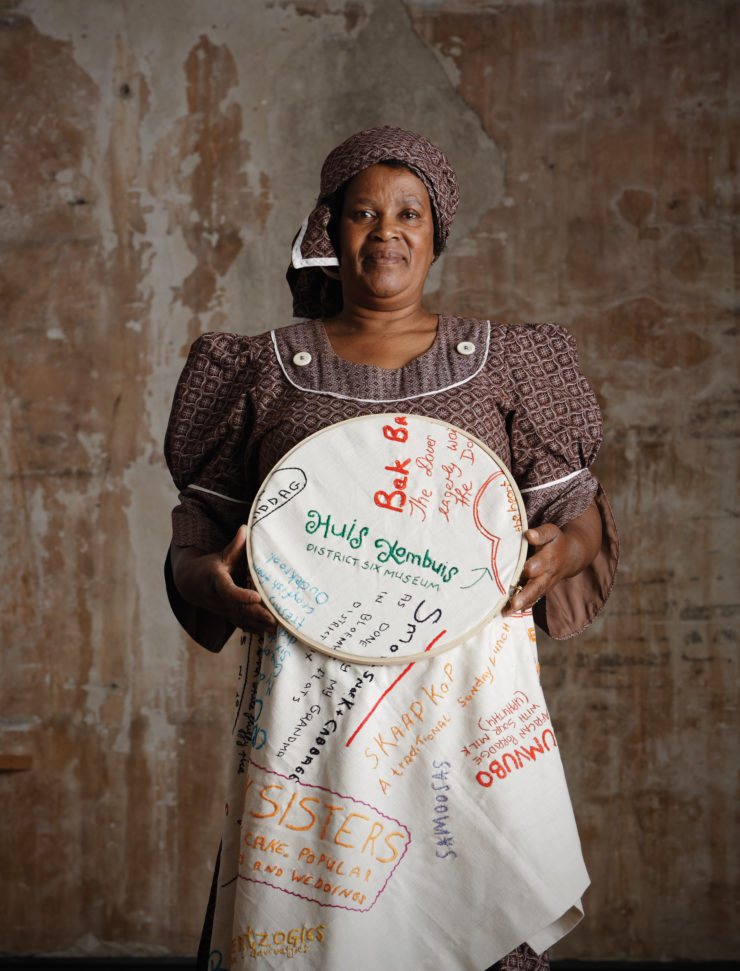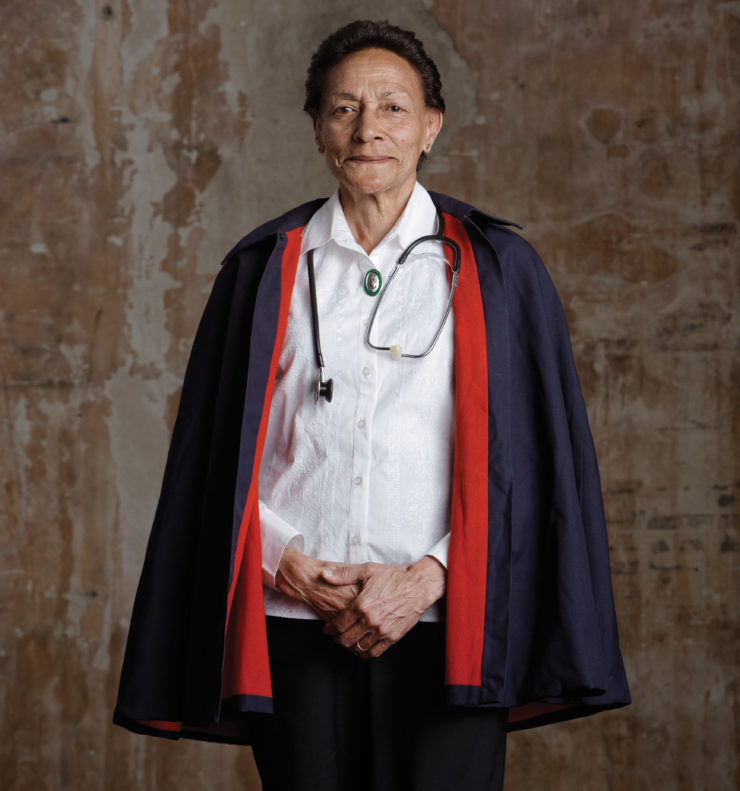
Residents gather in the District Six neighborhood in the years before it was demolished by the apartheid regime.
Marion Abrahams-Welsh grew up with four generations of her family on hilly Sheppard Street in the Cape Town neighborhood known as District Six. Fourteen of them shared a small home filled with love and possibility, even though they had little money.
In the new South African book “District Six Huis Kombuis: Food and Memory Cookbook,” a moving multimedia storytelling project that’s part cookbook, part collective memoir and part embroidery project, Abrahams-Welsh relives the shared meals and the family’s beloved rituals during her childhood in the 1930s and ’40s.
She’s 84 now, but she’s still trying to recapture her lost life in District Six, whose residents were forced out in 1966 when it was declared a White Group Area by the racist apartheid regime. Sixty thousand people were removed to the Cape Flats squatter camp, and all but religious buildings were demolished.
“I never lost the picture of what our home looked like and replicated all the dinnerware in my own home,” she says. “I’m trying to hold on to that memory.”

Marion Abrahams-Welsh grew up with four generations of her family on hilly Sheppard Street in the Cape Town neighborhood known as District Six.
Huis-kombuis means “home kitchen” in the Afrikaans language, and the cookbook shares the memories and recipes of former District Six residents.
“This is not a conventional cookbook; rather, it is a story about food that is deeply rooted in the cultural heritage that exists in the memories of those who were forcibly displaced,” Tina Smith, head of exhibitions for the District Six Museum in Cape Town, writes in the book’s introduction.
This is true. It is also true that “Huis Kombuis” is a fun book, alive with voice, texture and color.
In its collective narrative, “Huis Kombuis” goes a step beyond a standard cookbook “this is how I did it” voice to a “this is how it was” in District Six, offering a week in the old community as the narrative structure. But the real bones of the book are less traditional.
My senses awoke at the realization the hand-stitched recipes in “Huis Kombuis” were not some extraordinary font trick or kitsch photos of someone’s granny’s embroidery (although some part of me felt instantly obligated to appreciate that). They were embroidered by some of the two dozen contributors to the book in honor of their loved ones and the collective memory of District Six. The book is like an Instagram account with the soul of context. (Read more on Instagramming with conscience.)

Revina Gwemi spent seven years embroidering the names of former District Six residents and their memories on a “memory cloth” at the District Six Museum.
Revina Gwemi spent seven years embroidering the names of former District Six residents and their memories on a “memory cloth” at the District Six Museum, where the book was born. Gwemi’s contribution of the recipe for Isonka Samanzi, a Xhosa steam bread, rolls into her narrative well after the reader has become acquainted with the woman and her life.
“My work with the residents of District Six has given me a capacity for love, and I’ve learned about compassion and forgiveness,” she says in the book.
Recipes like Gwemi’s, woven orally and then transcribed later in “Huis Kombuis,” have a torch-passing quality lost in the formula of tested recipe. There’s a sidestep of authority that allows readers to pass through, giving them a silent place at the table as District Six neighbors share their memories.
The time it took for the contributors to embroider recipes to in turn be photographed for “Huis Kombuis” adds a temporal depth to the cookbook that ties our contemporary time to the time of District Six. A new-old media is captured in the hours spent pushing needle and thread through cloth, and the transcription of oral to written history.
In one section of the book, professor Shaun Viljoen writes, “Memories of food in the book are so much more than recipes passed on; they are assertions of an indomitable spirit of survival, stories of family and community, and claims to human dignity continually denied by successive colonial, segregationist and apartheid regimes.”

Patience Watlington writes about her childhood in District Six: “I didn’t think that I was losing out on anything. I thought it was how life was.”
Yet Patience Watlington writes about her childhood in District Six: “I didn’t think that I was losing out on anything. I thought it was how life was.”
Like other contributors to “Huis Kombuis,” Watlington attended workshops at the museum where they stitched their cloth and made a new community.“I learned so much, and the fellowship of all the ladies was the beauty of the workshops,” she says. “We did not only share our workshop experiences; we shared personal things with each other and boosted each other’s morale.”
With its untraditional storytelling, “Huis Kombuis” creates an analog to a world we all already know; it takes us there even before we’ve lit the stove.
A narrative arc is traditionally used to tell a story: rising action, climax, falling action. But there’s a term I prefer, denouement, that comes from the French to “unknot” a thing. In reading “Huis Kombuis,” we unstitch a multitude of voices belonging to a complicated past, but a careful appreciation of the cookbook comes from understanding the present. One of the contributors, Annie Bamm, uses the term pasella to describe the treats she would get as a child for certain errands like running to the butcher. American Southerners have an analogous term, sirsee. Both words mean “an unexpected gift” — the childhoods, the workshops, the memory cloths and now the pages of “Huis Kombuis.”


